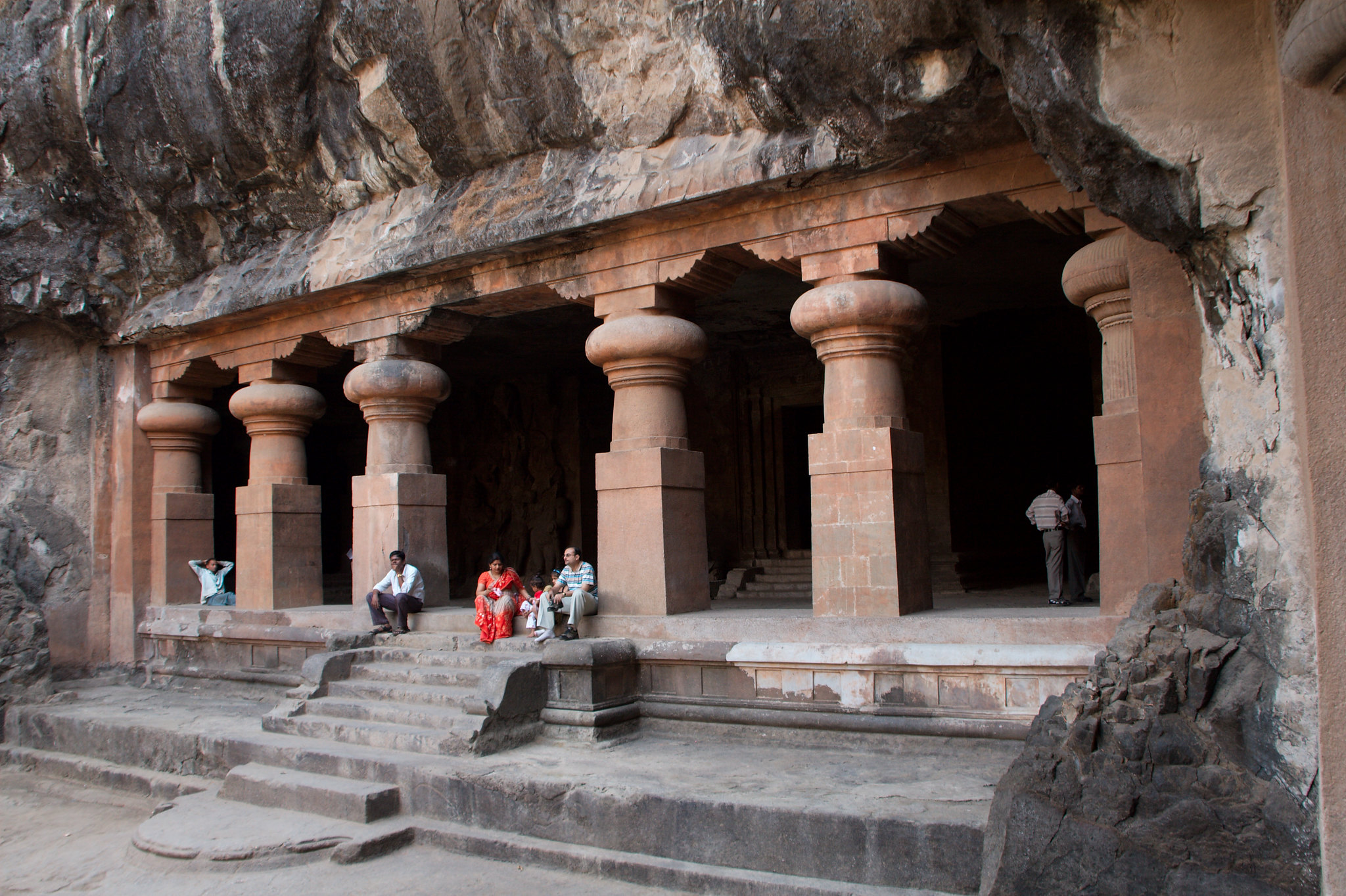Nestled on an island off the coast of Mumbai, the Elephanta Caves stand as a testament to ancient Indian artistry and religious devotion. These rock-cut temples, dating back to the 5th or 6th century CE, are a treasure trove of mythological sculptures that continue to captivate visitors from around the world. As you step into the main cave, you’re immediately transported into a realm where stone comes alive with stories of gods and legends.
The centerpiece of the Elephanta Caves is undoubtedly the colossal Trimurti sculpture. This imposing 20-foot-high relief depicts the three-faced Shiva, representing the Hindu god’s roles as creator, preserver, and destroyer. The serene central face embodies Shiva as the preserver, while the fierce right face and the gentle left face symbolize his destroyer and creator aspects, respectively. It’s a sight that leaves visitors in awe, not just for its size but for the intricate details that have survived centuries of weathering.
Moving deeper into the cave, you’ll encounter a series of panels that narrate various episodes from Shiva’s life. One particularly striking sculpture depicts the marriage of Shiva and Parvati. The divine couple is shown hand in hand, with attendants and other deities surrounding them in celebration. The artist’s skill is evident in the way the figures seem to emerge from the rock, their expressions and gestures frozen in time.
Another fascinating panel showcases the story of Shiva slaying the demon Andhaka. The dynamic composition captures the intensity of the battle, with Shiva’s multiple arms wielding various weapons. It’s a powerful representation of the triumph of good over evil, a recurring theme in Hindu mythology.
As you explore further, you’ll come across a sculpture of Shiva in his Nataraja form, performing the cosmic dance. This depiction is particularly noteworthy for its graceful portrayal of movement, despite being carved from solid rock. The Nataraja’s dance symbolizes the cyclical nature of creation and destruction, a concept central to Hindu philosophy.
One of the more intriguing sculptures in the caves is that of Ardhanarisvara, a form of Shiva that is half male and half female. This unique representation embodies the unity of masculine and feminine energies and serves as a powerful symbol of balance and harmony. The attention to detail in this sculpture is remarkable, with clear distinctions between the male and female halves in terms of attire, ornaments, and physical features.
While Shiva is the primary deity featured in the Elephanta Caves, other gods from the Hindu pantheon make appearances as well. You’ll find depictions of Vishnu, Brahma, and various other celestial beings, each playing a role in the grand mythological narrative woven throughout the caves.
As you wander through the Elephanta Caves, it’s impossible not to be struck by the sheer skill and dedication of the ancient artisans who created these masterpieces. Every chisel mark tells a story, every curve and contour brings myth to life. The sculptures not only serve as beautiful works of art but also as windows into the rich tapestry of Hindu mythology and philosophy.
Decoding these mythological sculptures is like unraveling a complex puzzle. Each figure, gesture, and symbol carries deep meaning, often with multiple layers of interpretation. While some visitors may appreciate the sculptures purely for their aesthetic value, those familiar with Hindu mythology will find themselves on a journey of discovery, connecting ancient stories with their stone representations.
As you leave the Elephanta Caves, you can’t help but feel a sense of wonder at the enduring power of these sculptures. They have stood the test of time, continuing to inspire and educate generations of visitors. In our fast-paced modern world, these ancient carvings serve as a reminder of the timeless nature of art and spirituality, inviting us to pause and reflect on the profound stories they tell.
The Elephanta Caves stand as a remarkable testament to ancient Indian art and architecture, showcasing the pinnacle of rock-cut temple construction. These UNESCO World Heritage Site caves, located on Elephanta Island near Mumbai, feature intricate sculptures and carvings dedicated primarily to Lord Shiva. Dating back to the 5th-8th centuries CE, the caves offer valuable insights into Hindu mythology, religious practices, and artistic techniques of the time. Despite facing natural and human-induced challenges over the centuries, the Elephanta Caves continue to captivate visitors and scholars alike, serving as an enduring symbol of India’s rich cultural heritage and artistic legacy.

